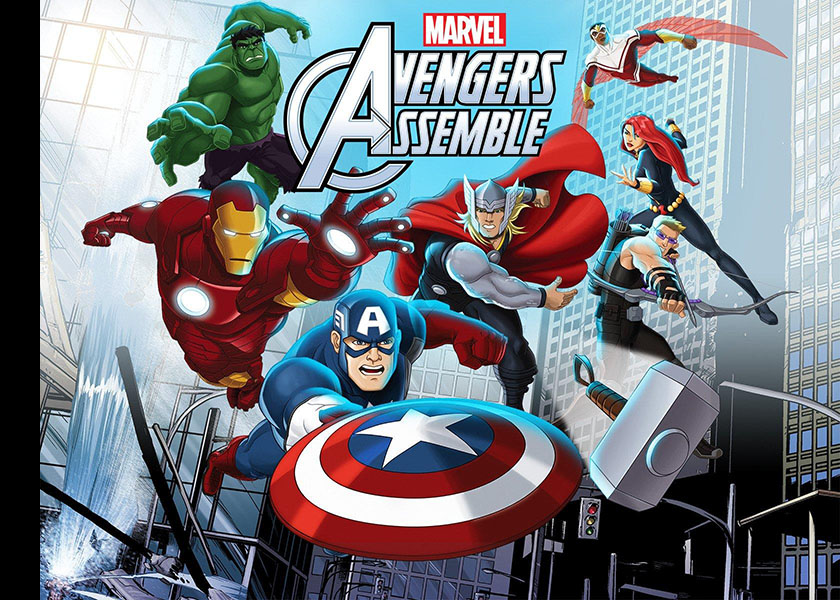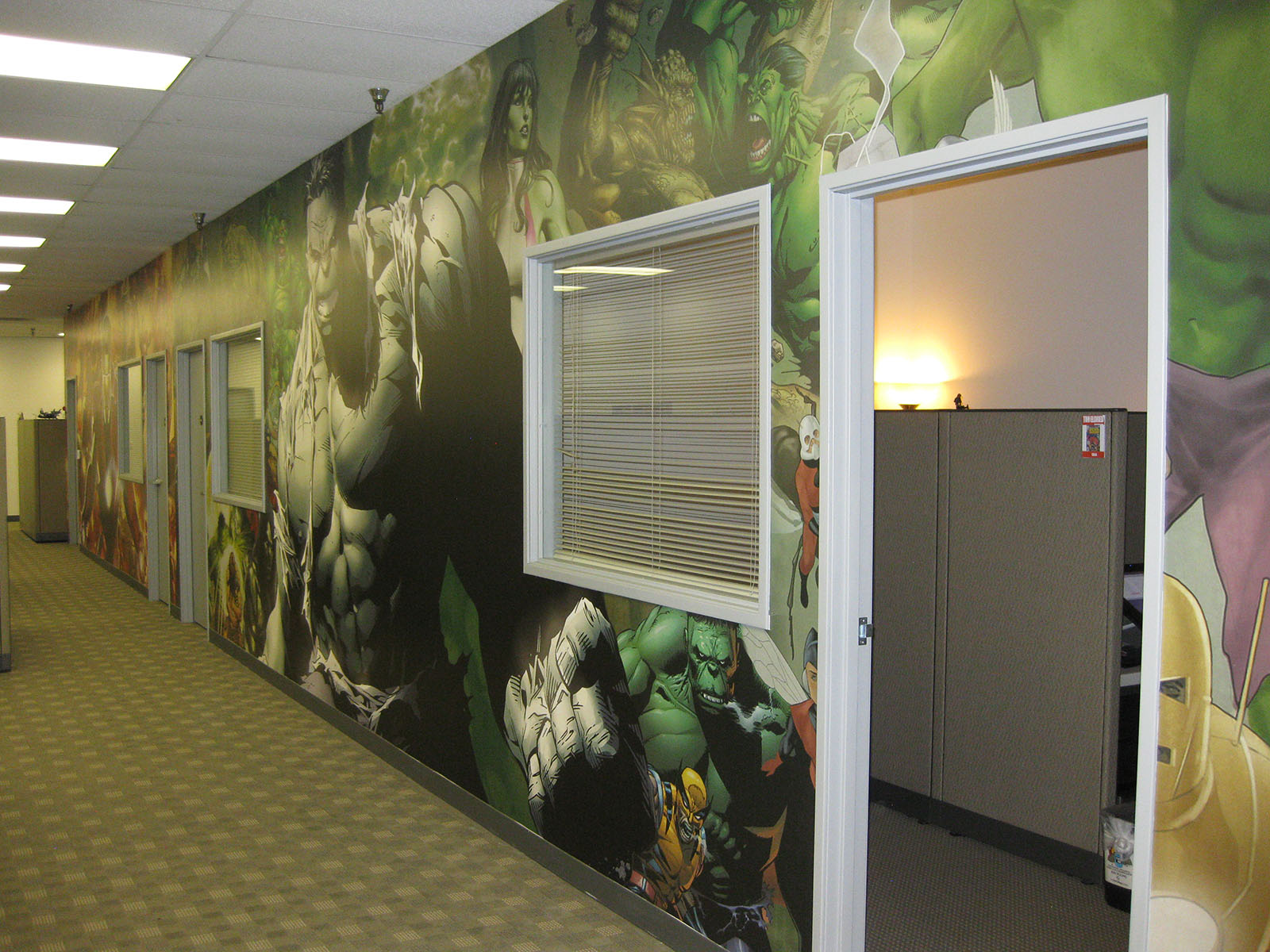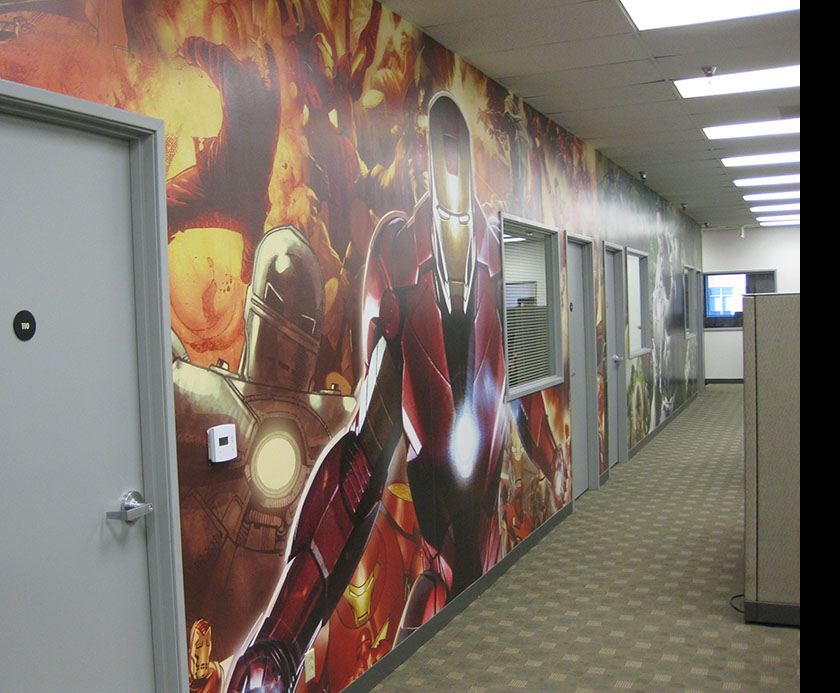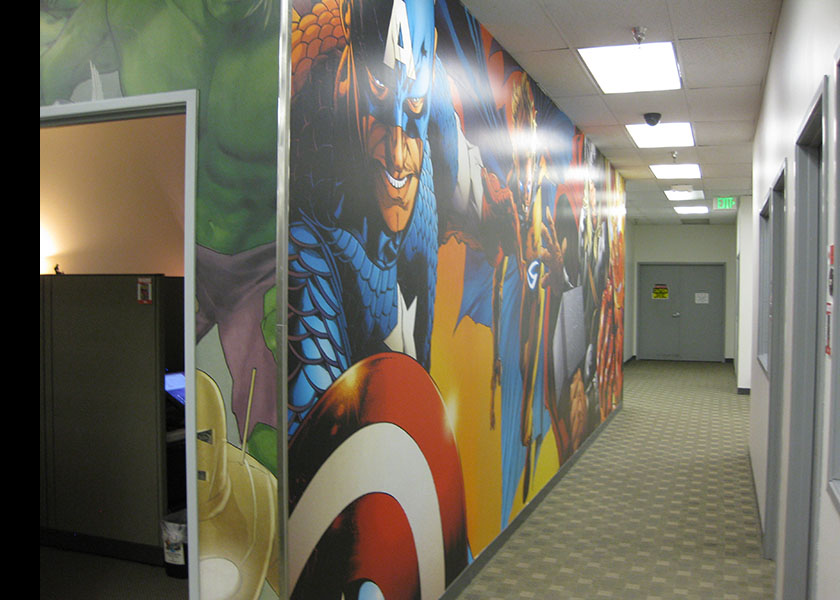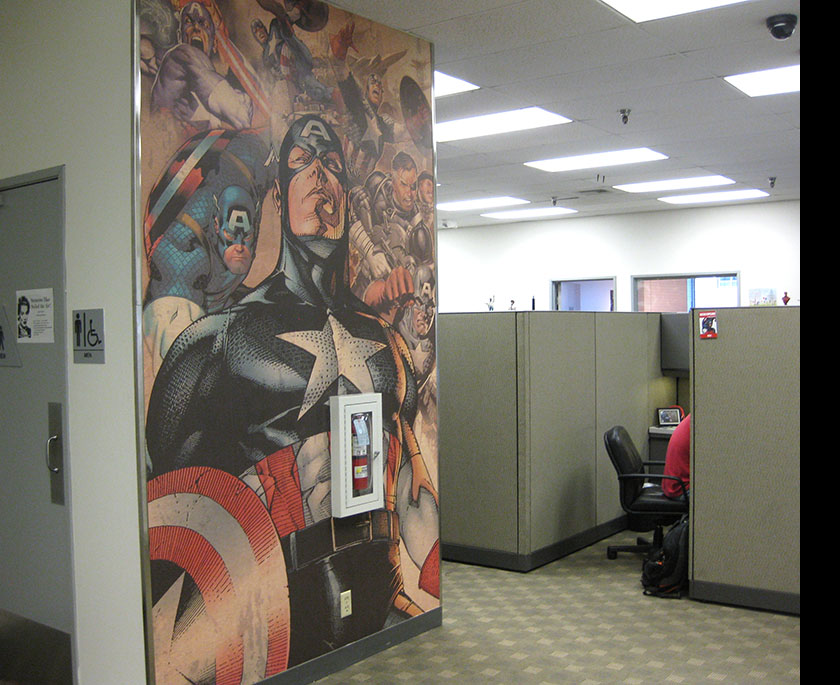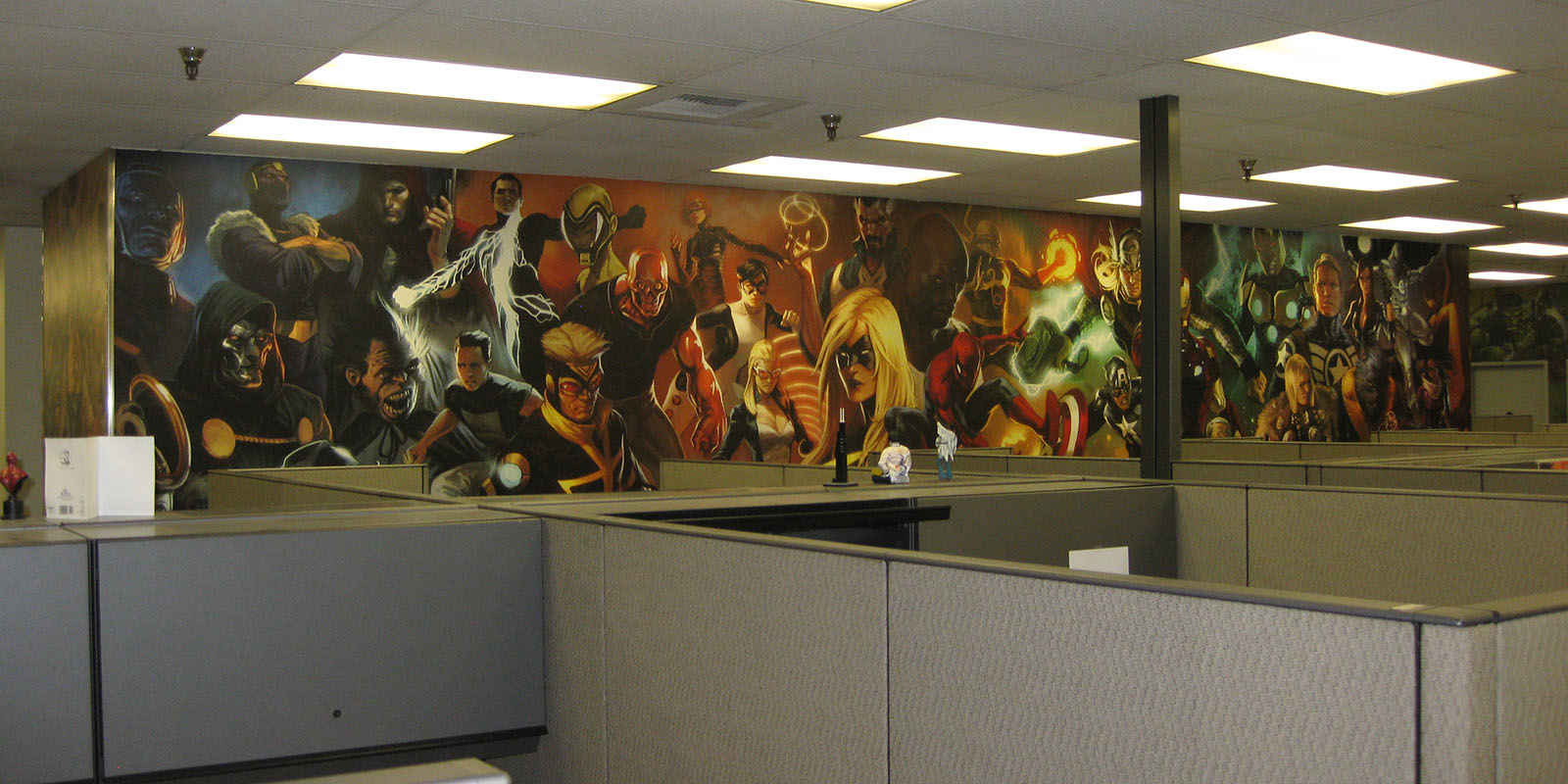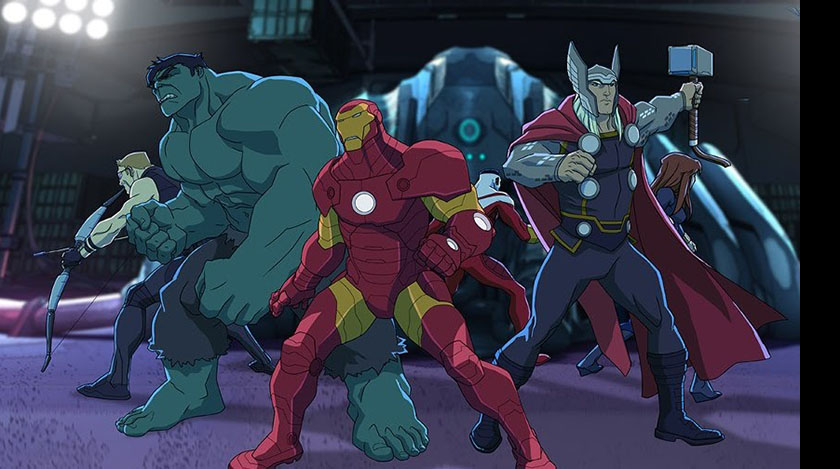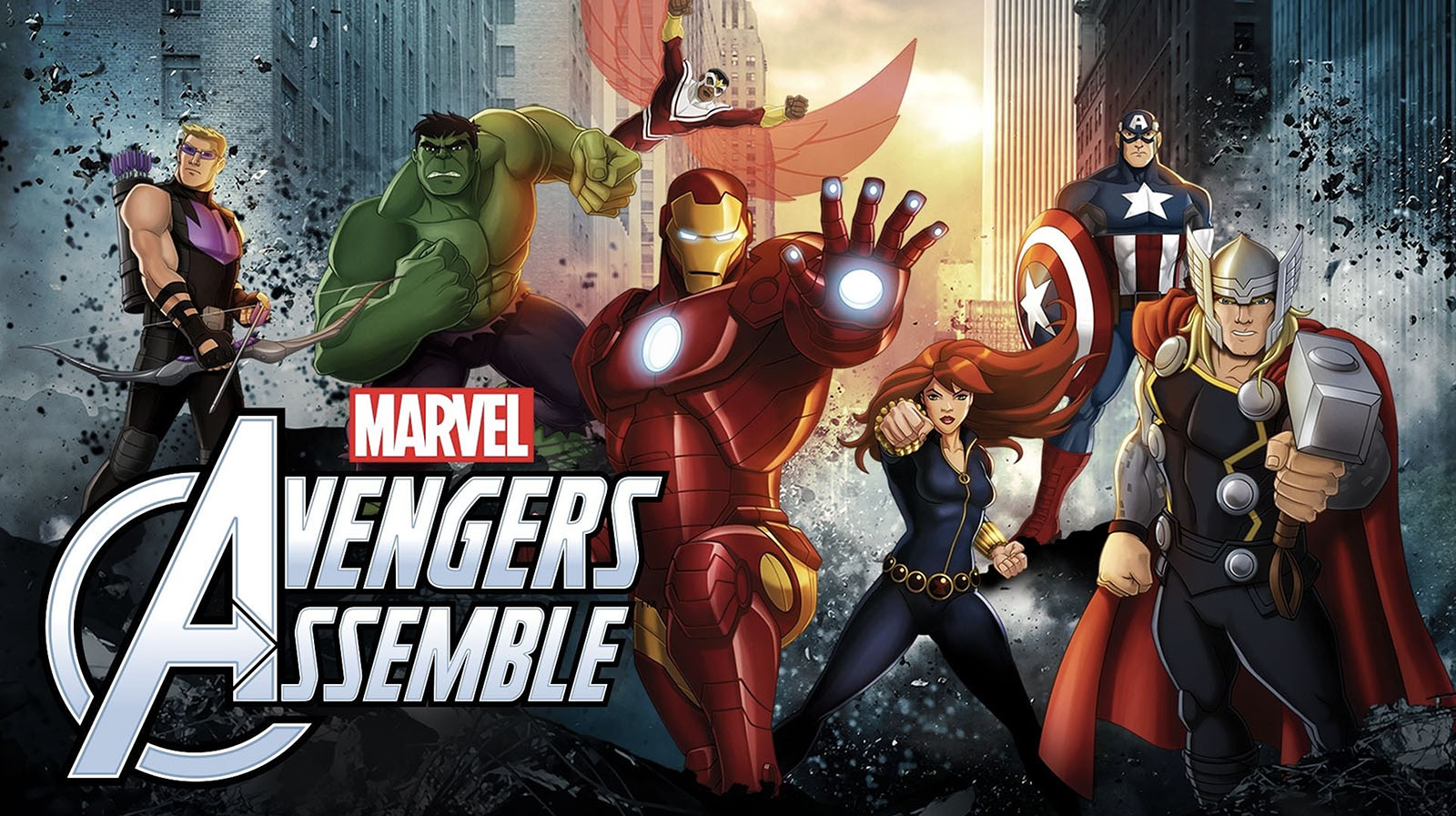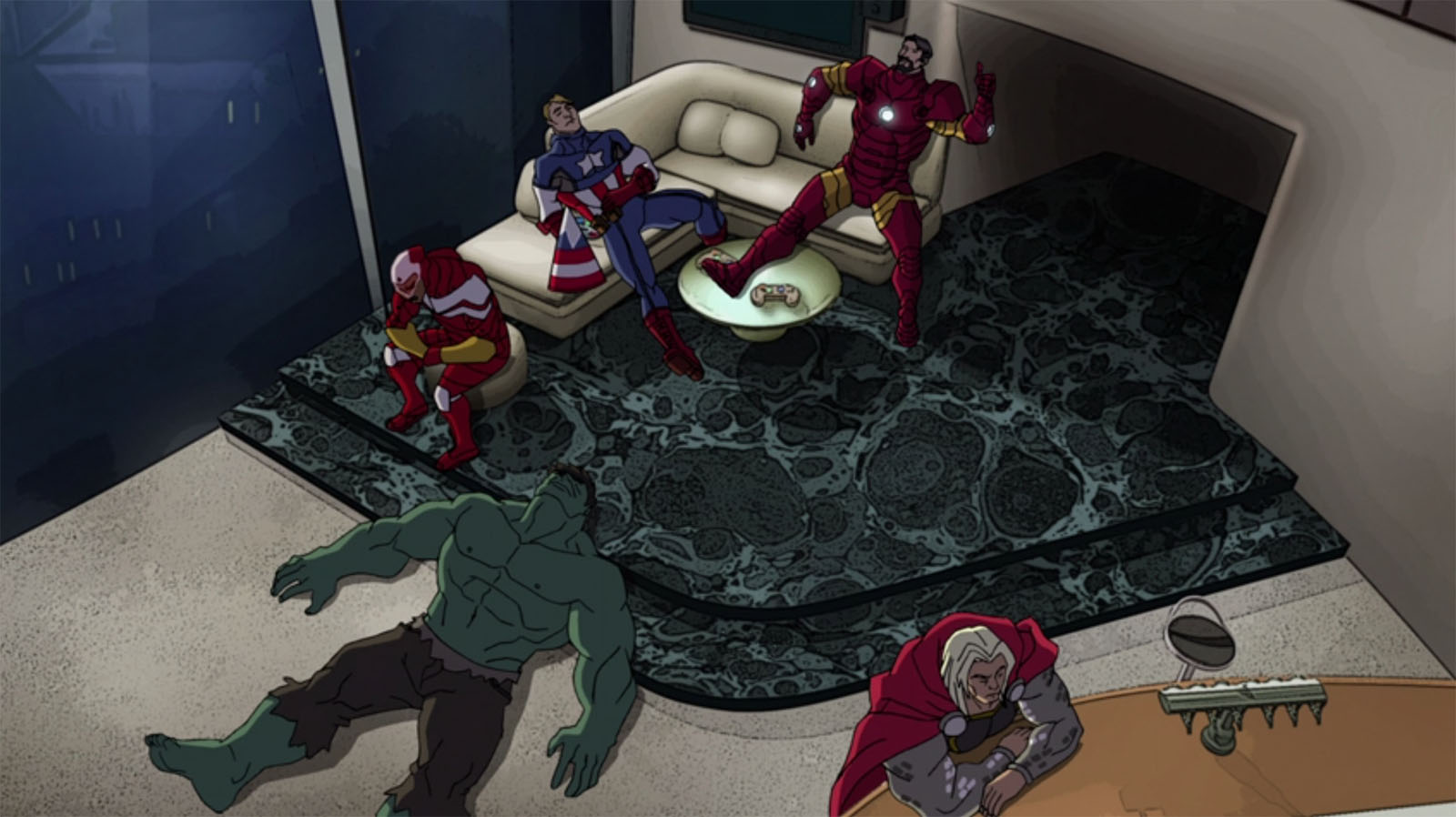Avengers Assemble season 1, 2012-13
As I write these words, almost ten years have passed since this particular adventure began. I remember it so vividly, it may as well have started yesterday.
It wasn’t quite the dawn of the MCU, but it was close enough. The first Avengers movie was about six months away when the fateful call came in from Producer Eric Radomski. I’d been working with him off and on since 2003, through Xiaolin Showdown, Shaggy & Scooby Doo, and Ultimate Spider-Man. The offer, like Eric himself, was direct and to the point. “Marvel is opening up a new studio and I’m running it. I want you there to direct.” And that was it. We weren’t exactly part of the MCU, but we were going to be in its orbit at just the right time for a helluva ride.
The prelude was an invitation-only screening of Avengers in early May 2012, about three weeks before the worldwide premiere. This one was for crew and “relevents.” Those of us who would soon be interpreting it as a TV cartoon were in that second category. I’d seen all the “phase 1” films leading up to this and was eager to see where it would go. I was not disappointed. Everything about it surpassed expectations, and I left feeling like I was lashed to a wild tiger. This thing was going to hit BIG. (Incidentally, the “shawarma tag” had not been added yet, so when I saw it again there was an extra surprise in it for me.)
It began for real at the end of June, when I walked into MAS (Marvel Animation Studio) for my first day as a full-time employee anywhere in about eight years. During that stretch, I’d flourished as a freelancer, taking in multiple storyboard assignments from multiple studios, fully in control of my own schedule. I used those years to write and draw an entire Star Blazers webcomic and an entire Grease Monkey graphic novel, publishing both online and fulfilling the dream of shaking off the tyranny of paper.
But, as I’ve described elsewhere, technical changes in the craft of storyboarding made freelancing untenable in 2011 and I was forced to abandon it. Avengers Assemble came along at just the right time, so I was grateful for that, but I felt incredibly depressed when I walked into the office on day 1. It felt like defeat. That feeling would pass, but there were other obstacles to clear first.
Below: that was my office there on the right.
The GOOD thing about working on a crew in a studio is that you’re not there alone. You have allies. You are part of a tribe, all collaborating to reach the same goal. When everyone understands what they’re there for, and is enthusiastic about the product, that’s the best fuel you can get. I was looking forward to that as a tradeoff for what I’d given up. I was also looking forward to being challenged creatively, being surrounded by other artists at the top of their game. This was Marvel, after all.
That’s not what was waiting for me.
In my first meeting of the day, I sat down with our director of production and asked when I could meet my team, the storyboard artists who would report to me as a director. I got an answer I wasn’t expecting.
“Your crew is in Vancouver. You’ll be working with them long-distance.”
Um…what?
Here’s the deal: if you send work to Canada, it gets cheaper due to tax credits provided by the Canadian government. They create such incentives to keep Canadian citizens employed. The same is true in Georgia. The pejorative term for this at the time was “runaway production,” the act of moving work out of Los Angeles. No doubt, California is an expensive state to do business in. So everyone always looks for angles to bring cost down. I get that. I just didn’t anticipate being subjected to it in this way. But now I was.
In Covid world, this is less of an anomaly. Once we all started working remotely, long distance was no longer a handicap. You don’t have to live in L.A. these days to make TV cartoons. We’re all very interested to see how it will continue to evolve, and finding new ways to do things in the meantime. As of this writing, for example, I am a remote employee of a studio in Vancouver. And I’m not the only one. Adaptability is required for a job like mine, and I’m lucky to have that in my skill set. It’s more important than ever.
In 2012, though, it was a lot to deal with. Not being able to communicate with my crew face to face was a whole new obstacle that would test me like never before. But in another way, it was an extension of what we were already doing; ultimately, we were drawing storyboards for animators in Korea who probably didn’t speak English. Thus, our drawings had to do most of the talking for us. Fortunately, there was no language barrier in this new scenario. So that was a plus.
The studio in Vancouver was named Atomic, and they had a team of artists lined up to work with me. I got to fly up for an early visit to meet them just as we were starting our first episode. The leads had some superhero action experience, but Avengers was going to be the most complex thing they’d ever done. I knew that because it was for me too, even after ten-plus years of superhero shows. This one was HARD. Like threading multiple needles while also keeping several trains on their respective tracks (at peak, I had five episodes running simultaneously, all in different stages of production).
Most cartoons made in Vancouver were for preschool viewers, and now we were asking them to storyboard half-hour action episodes filled with six main characters, lots of special effects, and multi-layered fight choreography. The first Avengers movie set a high bar. No one was ready for it, and some of them crumbled in the first round.
On my side, all the instructions and revisions I would normally have communicated face-to-face (2-way communication) had to be written and drawn (1-way communication). I must have produced a full textbook worth of material for every episode. The worst part was that we had to start a new episode every four weeks, so there was no time for trial and error. Rather than allowing everyone to discover their own solutions and learn from experience, I often ended up redrawing a lot of boards from start to finish for them to clean up.
We would occasionally huddle over the phone and I would explain why I’d made changes, but it was still the worst way to teach. It took the entire first half of season 1 to get past that point, during which time several artists cycled in and out. Once we found our groove with a core team, they understood what they had to learn from all this, and that they would be as tough as diamonds when it was over. After Avengers, they could handle anything.
I wasn’t involved with the writing of the show, but the writing team (Man of Action) had problems of their own trying to keep both Marvel and Disney satisfied. It was another case where everyone knew they were riding a giant wave, so scrutiny and interference were constant. It didn’t settle down until about the midpoint, where the chain of command was streamlined and counter-productive practices were pushed aside (not unlike what was happening on the movie side at the time, from what I remember).
It would all have been MUCH easier if we were given more than four weeks per script, but we weren’t funded by movie money, so this was apparently the only way an Avengers cartoon could be made. It was kinda nuts given the multibillion dollar machine we were supposedly attached to, but nobody asked me to figure that out for them.
The strategic purpose of our show, and all the other cartoons being made at Marvel Animation Studio, was to keep the brand visible and merchandisable between movie releases. We were made aware more than once that the bean counters didn’t care all that much about how good our shows were, as long as they got on the air. But we were too dedicated to our craft to let things slide. If my name was going to be in the credits, I sure wasn’t going to turn in something half-assed. It was either whole ass or no ass.
So what was the upside of all this struggle? First, I got to work side by side with one of my best pals, Jeff Allen, who had been hired as the other director. He did the odd episodes and I did the evens. His storyboard team was in-house, which was kind of luck-of-the-draw. Second, I got to make a bunch of new friends on the crew, none of whom I’d ever worked with before. It was the start of a five-season run, and we were thick as thieves all the way through. Third, it was a singular opportunity to be working for Marvel during the meteoric upswing of the MCU. We got to attend every Hollywood premiere for one massive hit after another, all the way through Far From Home. Even if we were small fry footnotes, there was only one time in movie history this all could have happened, and we were there for it.
Last and most important, I had the opportunity to teach artists and watch the lessons be absorbed. It was halting and frustrating in the beginning, but over time those who weren’t cut out for it made way for others who were. Those who made it all the way through were on a path to become masters of their craft.
I was told later that my influence was not limited to the team I worked with directly; the lessons propagated throughout the entire Vancouver studio and benefitted everyone. I was immensely proud to have that kind of impact. And by the time Covid came around, I’d already had many years of remote production experience to ease the transition. I’d thought about walking away from it more than once, but I didn’t, and I don’t regret it. Nothing about it was wasted.
The first season of Avengers Assemble ran for 26 episodes. I contributed storyboards to the first two and directed 12 more, including the finale. The show wasn’t intended to be part of the MCU, instead starting from the first Avengers movie and following its own continuity. It ran on Disney XD from May 2013 to May 2014 and was released on DVD.
All the episodes can now be seen on Vudu, Amazon Prime, iTunes, and Disney Plus.
MORE DATA:
IMDb page | Wikipedia page | Avengers Assemble Wiki | Marvel Animated Universe Wiki | Season 1 episode list
Episodes I directed
4. The Serpent of Doom
Thor believes he must sacrifice himself to save the world from Doctor Doom and the Midgard Serpent.
This was a helluva show to debut with. Doctor Doom and a giant monster rampaging through New York City with all the scale and action we could pack in. It was a rough ride for me, wrangling my long-distance crew and also clashing with our Exec Producer (Jeph Loeb) on matters of both style and substance. But somehow we all got it done without hating each other.
6. Super Adaptoid
The Avengers are out-gunned by the Super-Adaptoid, and Captain America is the last man standing.
This was a very rewarding episode to work on, giving me lots of opportunities to improvise and enhance what was in the script. I even got to go into space before it was over. It sounds like horn-tooting, but I just kept surprising myself by what I came up with. My creativity was growing and I felt like I truly belonged on this series.
8. Molecule Kid
Hawkeye and Black Widow take on a covert SHIELD mission to bring in the son of a super-villain.
This started out as a so-so script but kept getting better the more we dug in and found ways to “rewrite” it with our drawings. The best part for me was developing a new kind of visual language for the extra-dimensional sequence in the climax. I truly felt like a director again after years of freelancing for other directors.
10. Doomstroyer
Doctor Doom takes command of the Asgardian Destroyer armor and Thor has to trust Loki to stop him.
This was a great script with a lot to sink my teeth into, both in design and storytelling. Unfortunately, it was one of the hardest to get done. The storyboard team had been steadily improving, but suddenly regressed for some reason and I ended up boarding about 75% of it on my own. This led to a shakeup on the Canadian side, but things got back on track with the next one.
12. Avengers: Impossible!
The shape-shifting mischief-maker Impossible Man makes Falcon the star of his action movie.
This was a comedy episode with Impossible Man giving us opportunities to ad-lib one gag after another. I even got to contribute to the writing with the “It’s not Attuma” line (the only time in human history that joke was possible) and a fake credit roll at the end. We also got to remake some of the Avengers movie, which was fun.
14. Hulk’s Day Out
When Hulk crash-lands on Earth with amnesia, he only remembers that the planet is doomed.
This was another fun one, inadvertently turning into another comedy episode (in the vein of The Hangover) with everyone retracing Hulk’s steps to meet up with the Thing and Spider-Man on the way to a giant monster fight on the moon. But by this time, the writers had been instructed to push the series into more serious territory going forward.
16. Bring on the Bad Guys
The Avengers start to see how tough The Cabal really is and just how much strength they’ll need to find in each other to take them down.
This is where the overall arc of the season took hold and a team of villains from the first half teamed up to name themselves The Cabal and give the Avengers a run for their money. They would have a bigger impact on the second half.
18. Mojo World
Hulk and Hawkeye suddenly find themselves stuck in a death match at the hands of the intergalactic ringmaster, Mojo.
I really enjoyed working on this one, since it took place mostly on a spaceship and I got to design almost all the environments from start to finish. None of the finished episodes ever quite lived up to the shows in my head due to animation mistakes that forced compromises in post-production, but at least I got the chance to draw them the way I saw them.
20. All-Father’s Day
Odin comes to Avengers Tower demanding his son cease his “fun” on Earth and return to Asgard.
Here’s a piece of advice: any time someone wants you to direct an episode in which Odin beats up the Avengers one by one and then throws down against Mangog in Central Park, DO IT. This one gave us lots of chances to channel Jack Kirby and we took it to the BANK.
22. Guardians and Space Knights
Galactus attacks Earth and Iron Man is able to lead him to another planet, but they find out it’s under the protection of the Guardians of the Galaxy.
This was the “magic” episode of the first season, where I saw it all play out in my head as I read the script and then it effortlessly flowed out of my pen. It was another case where I got to design almost everything and I was so energized that I set a new record for most panels drawn in a single day (140). It was done two years before the first GotG movie came out, so the characters were based on the comics version instead.
24. Crime and Circuses
When the Circus of Crime rolls into town, Hawkeye’s dark past begins to surface and puts the Avengers in danger.
With this I went from my most favorite episode to my least favorite, in which the Avengers are all turned into evil clowns. In my opinion, the weakest and most cliched villain possible. It was challenging to come up with special moves for the Circus of Crime characters, but other than that I just wanted to get through it and move on.
26. The Final Showdown
With the Tesseract now in the hands of the Cosmic Skull, Tony realizes teaming up with the rest of the Cabal might be their only chance for victory.
The season finale is always the biggest episode and the most demanding to make, but I reveled in it. The fight took us all over the planet and every set piece was like a mini-movie. I wouldn’t want to do episodes like this one all the time, but they definitely become high points in my career. And there were still four more seasons of them to come.
DESIGN GALLERIES
Because of our tight schedule, I often had to step in and design things as I saw them. Here is my design work from multiple episodes across multiple seasons.
CHARACTER GALLERY
Click here
MECHA GALLERY
Click here
CREATURE GALLERY
Click here
Coming soon: SEASON 2! Until then…

